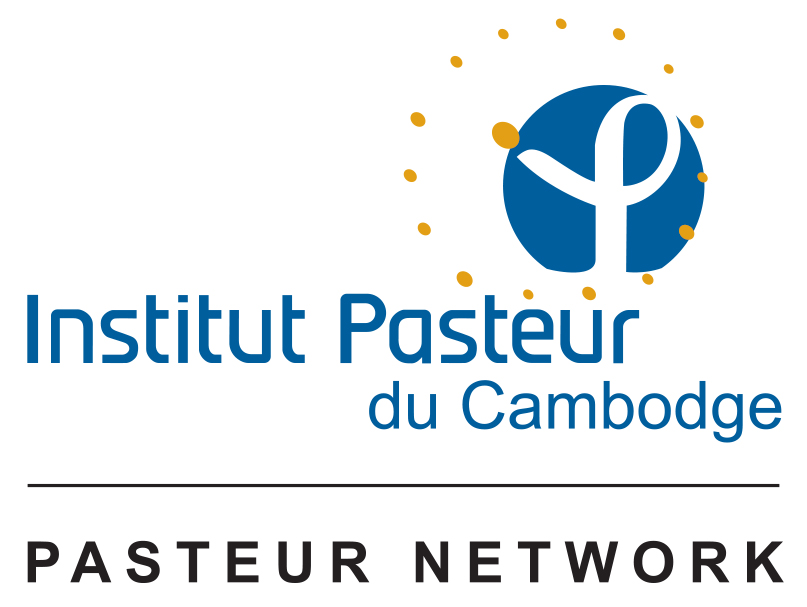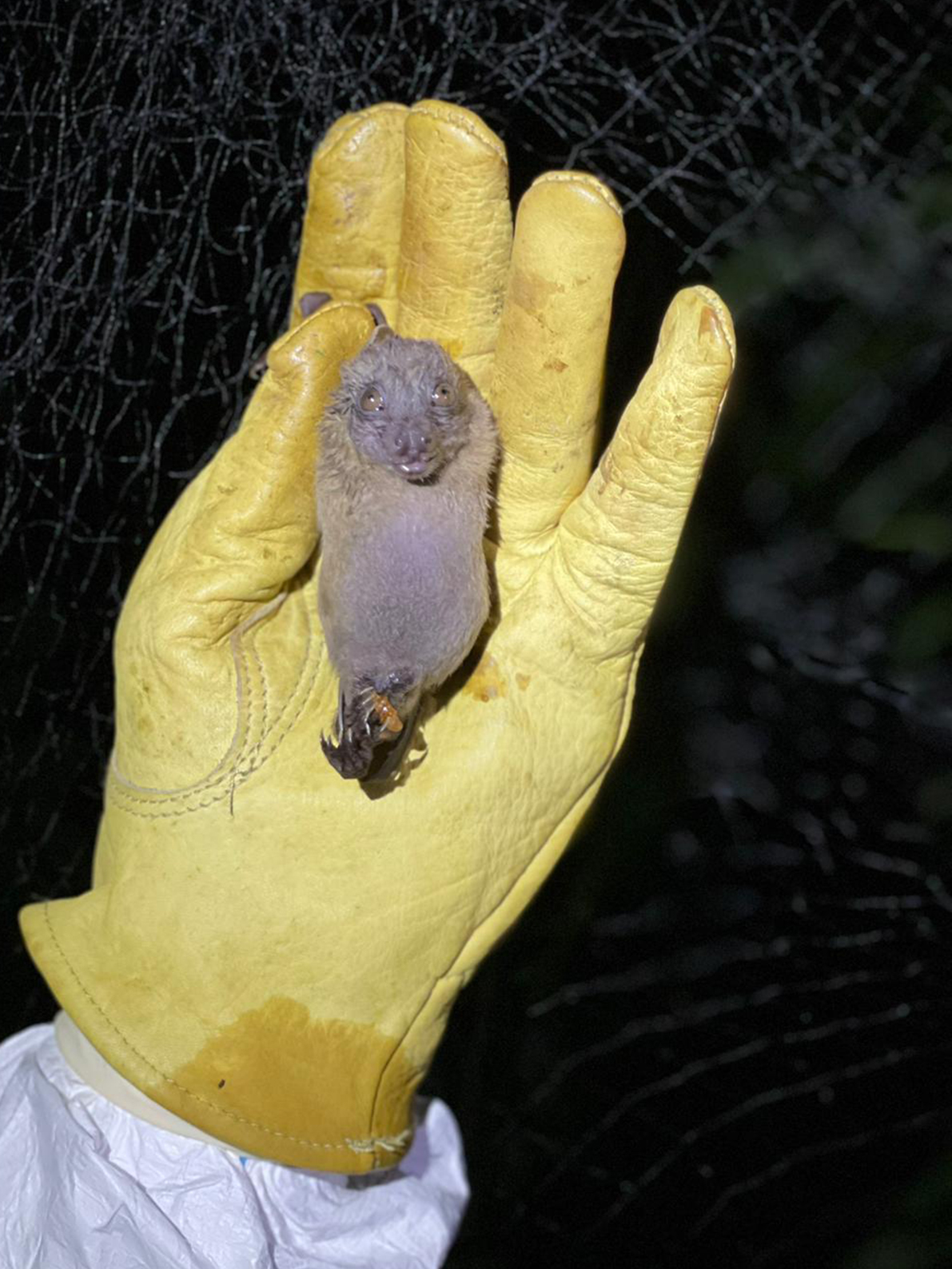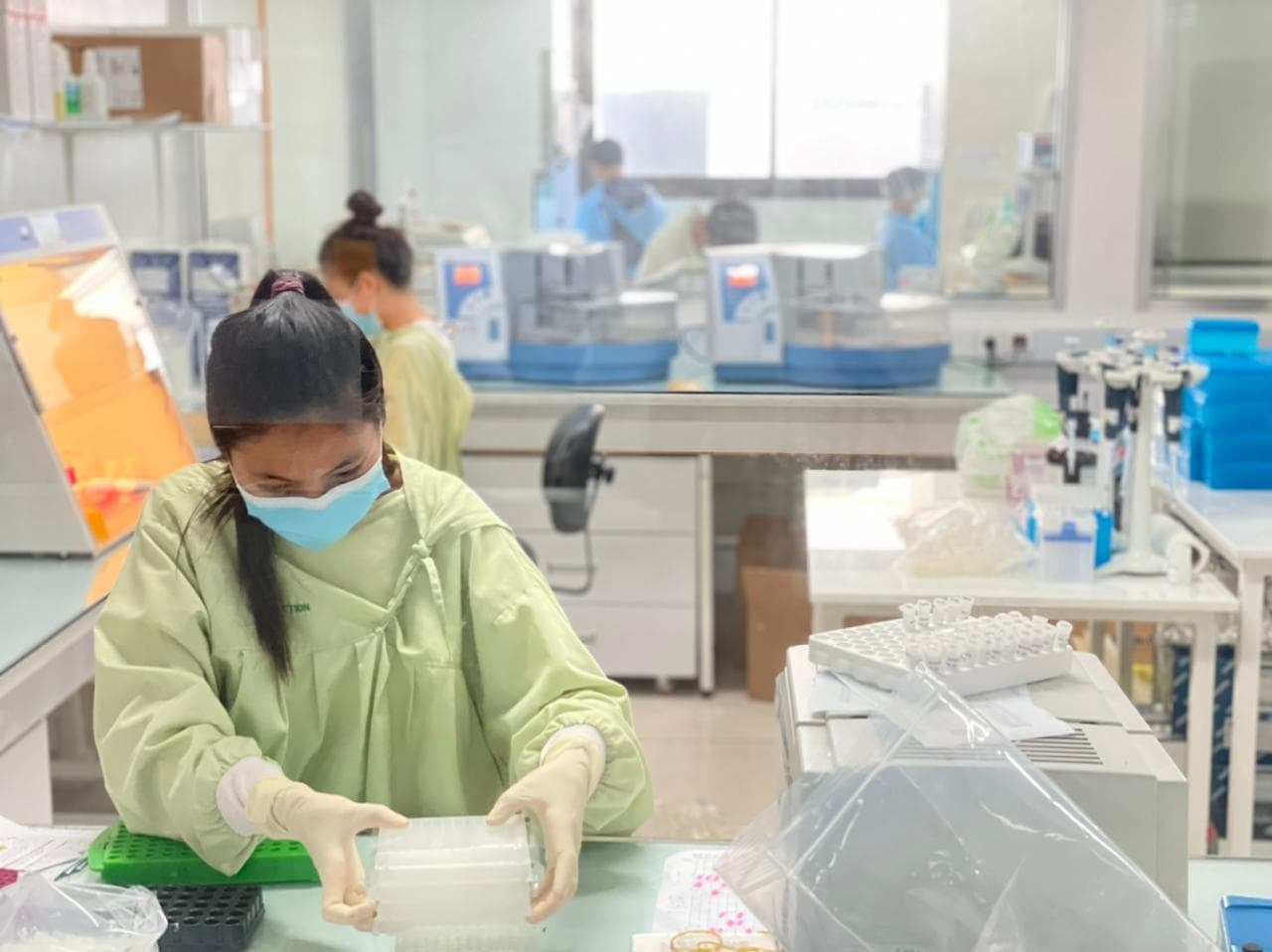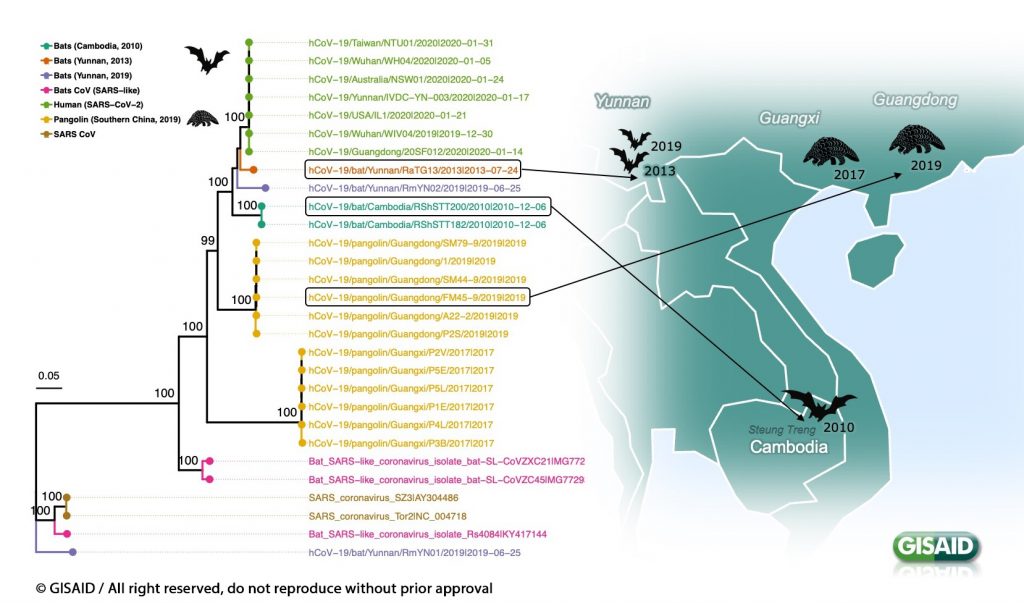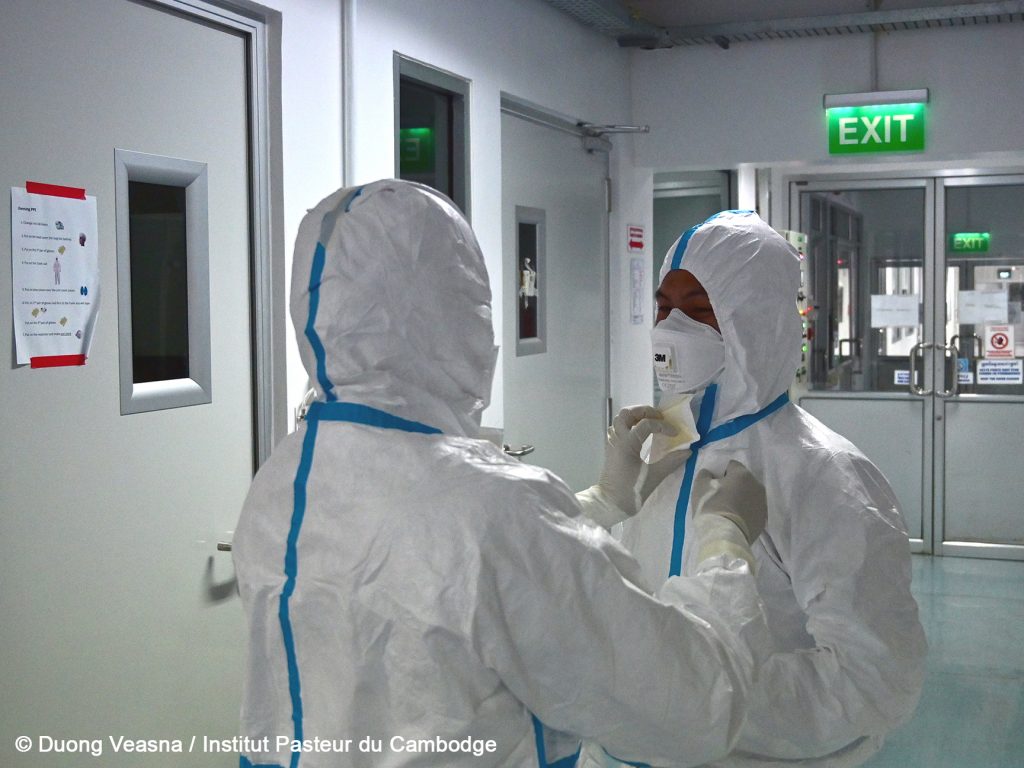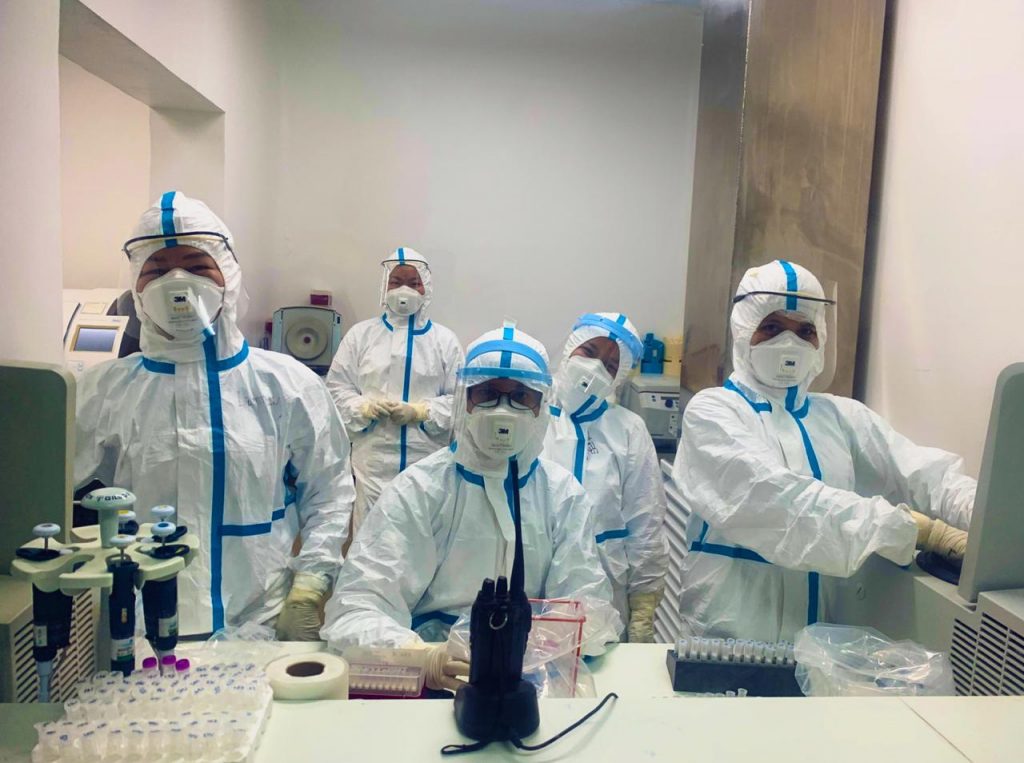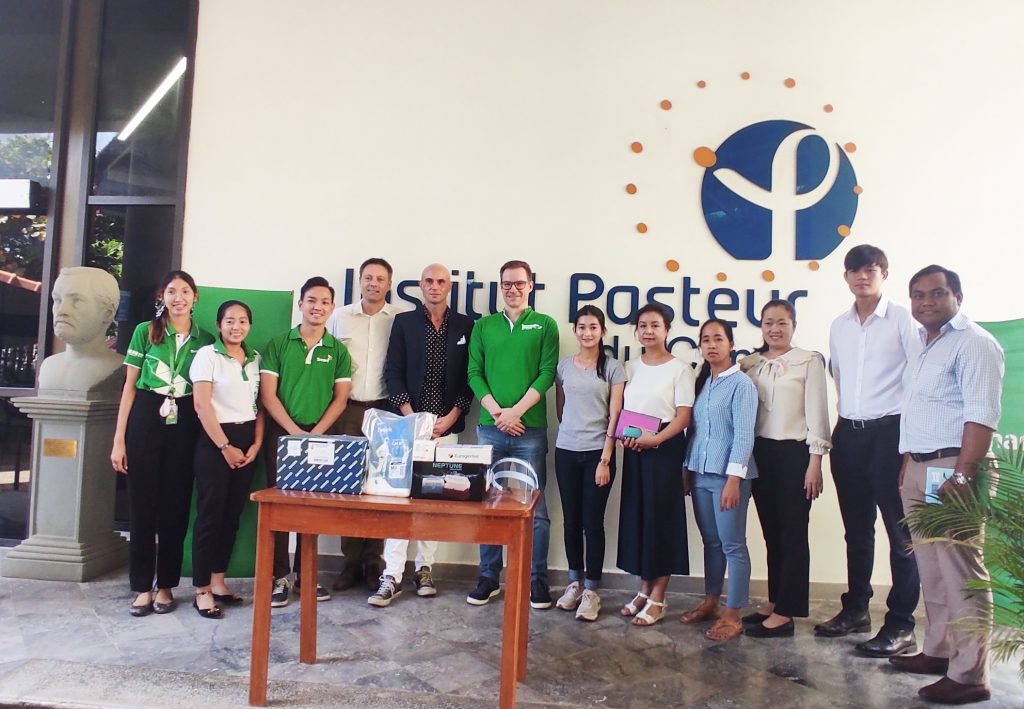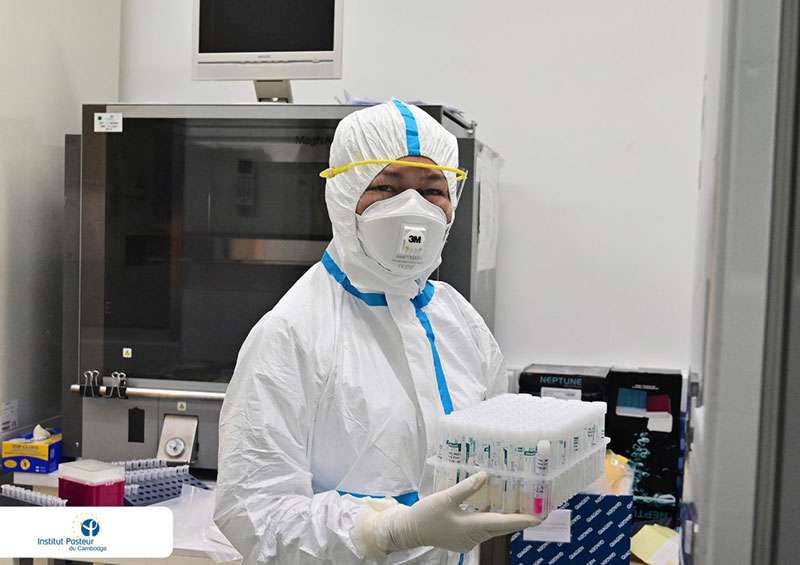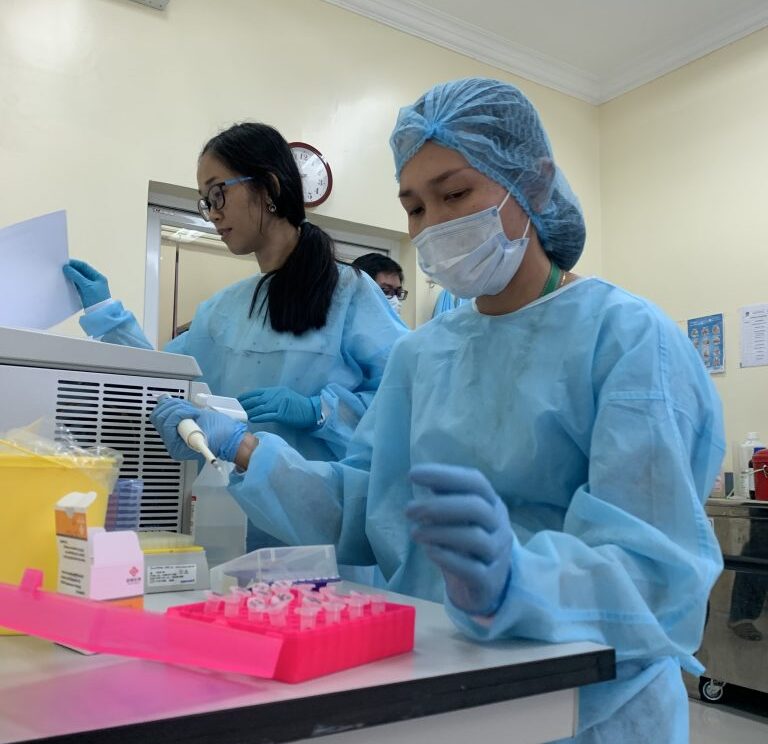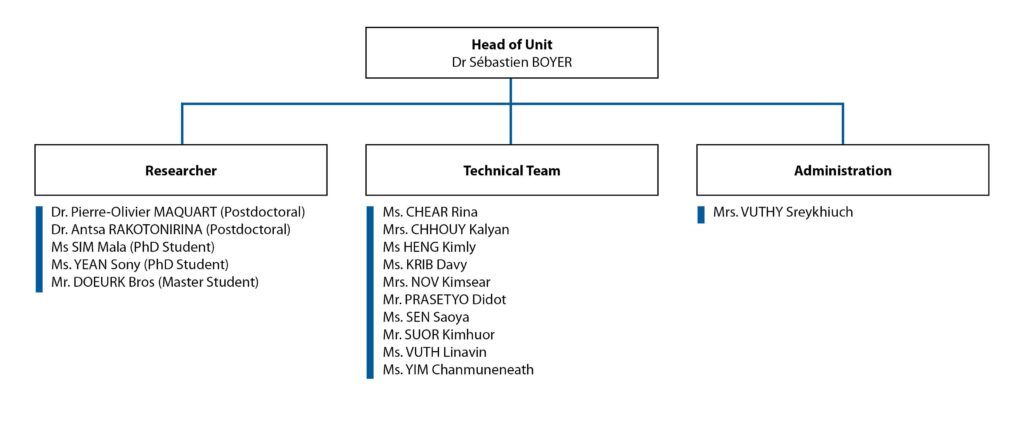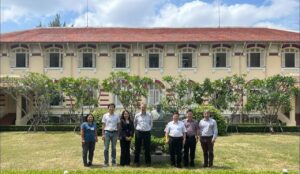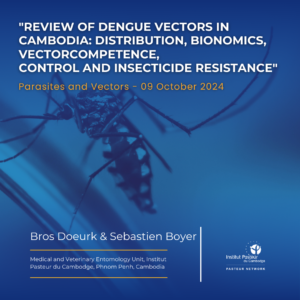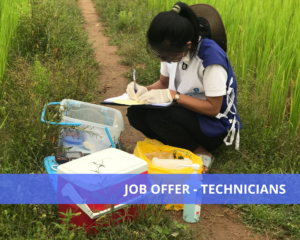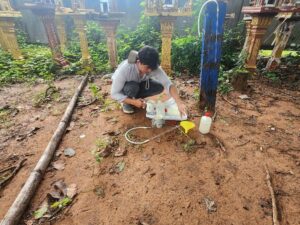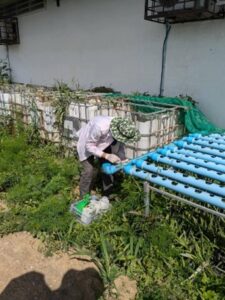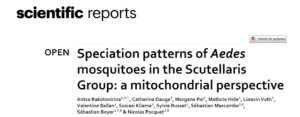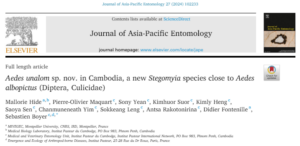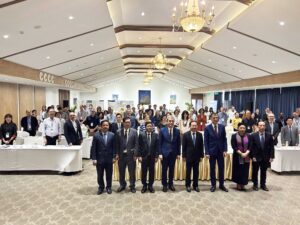FSPI SEA TICKEY
Southeast Asia Tick Determination Key (SEA TICKEY)
This project aims to develop a determination key for tick species for all the countries in Southeast Asia. This project will initiate and develop veterinary entomology in Cambodia. The main partners are the Royal University of Agriculture and the Ministry of Agriculture. This project was proposed to a regional Southeast Asia FSPI, based in Thailand.
We propose to create and develop a complete and updated key for tick species identification for Southeast Asia that will be freely distributed to all public and private actors. In the medium term, the identification key created in the present project will be used to perform an inventory of tick species present in Cambodia and the Lao People’s Democratic Republic (PDR), diversity and distribution to share knowledge with local veterinary and public health services and universities, to build capacities to monitor TBD in humans and livestock at the national level. It will also allow the development of several planned research projects on TBD in Southeast Asia in a One Health approach.
In parallel to the creation of the tick identification key and its dissemination throughout Southeast Asia, we will also initiate the implementation of MALDI-TOF databases using ticks collected in the field in Cambodia and Lao PDR (with the involvement of veterinary and farm actors). One database created from one leg of each collected tick specimen will be developed for tick species identification. In future One Health projects, the MALDI-TOF method will be further used for pathogen discovery.
Funding: Embassy of France in Thailand, French Ministry for Europe and Foreign Affairs
Project period: 2022-2023
FSPI VECAM
Establishment of Veterinary Entomology in Cambodia (VECAM)
As for the medical entomology that was absent within the research landscape in Cambodia, our unit wants to develop veterinary entomology. Based on a joint request of the Ministry of Agriculture (General Directorate of Animal Health and Production) and the Royal University of Agriculture, we will try to propose a developmental and research project during this year, based on babesiosis and trypanosomiasis as requested by the two national partners. It could be the first step on further studies on ticks responsible for animal and human pathogens’ transmission. The main partners are the Royal University of Agriculture and Ministry of Agriculture. This project was submitted at MEAE with the French Embassy in Cambodia.
Funding: Embassy of France in Cambodia, French Ministry for Europe and Foreign Affairs
Project period: 2022-2023
FSPI SEA TICKEY
Southeast Asia Tick Determination Key (SEA TICKEY)
This project aims to develop a determination key for tick species for all the countries in Southeast Asia. This project will initiate and develop veterinary entomology in Cambodia. The main partners are the Royal University of Agriculture and the Ministry of Agriculture. This project was proposed to a regional Southeast Asia FSPI, based in Thailand.
We propose to create and develop a complete and updated key for tick species identification for Southeast Asia that will be freely distributed to all public and private actors. In the medium term, the identification key created in the present project will be used to perform an inventory of tick species present in Cambodia and the Lao People’s Democratic Republic (PDR), diversity and distribution to share knowledge with local veterinary and public health services and universities, to build capacities to monitor TBD in humans and livestock at the national level. It will also allow the development of several planned research projects on TBD in Southeast Asia in a One Health approach.
In parallel to the creation of the tick identification key and its dissemination throughout Southeast Asia, we will also initiate the implementation of MALDI-TOF databases using ticks collected in the field in Cambodia and Lao PDR (with the involvement of veterinary and farm actors). One database created from one leg of each collected tick specimen will be developed for tick species identification. In future One Health projects, the MALDI-TOF method will be further used for pathogen discovery.
Funding: Embassy of France in Thailand, French Ministry for Europe and Foreign Affairs
Project period: 2022-2023
Ecomore 2 Project: Economic Development, Ecosystem Modifications, and Emerging Infectious Diseases Risk Evaluation
The Ecomore 2 Project is funded by the AFD (Agence Française de Développement). The objective of the project is to determine if a successful integrated vector management system in localized areas could decrease the incidence of dengue virus in communities in rural and peri-urban areas. The project will officially finish in December 2022. In 2021, there was a technical audit and a steering committee review.
Funding: French Development Agengy (AFD)
Project period: 2016-2022
DARPA-PREEMPT Project: Preventing Emerging Pathogenic Threats
The PREEMPT project aims to determine the mosquito species and virus families present in biodiversity conservation areas. The objectives will be to sample different areas, such as wildlife parks, conservation areas, and natural parks in order to determine the presence of potential viruses. This work is coordinated with the Ministry of Environment and the World Conservation Society-Cambodia.
In 2021, the last two project field missions took place during the dry season. The two sites listed below were sampled in 2021:
- Prek Toal Wildlife Sanctuary, located in Battambang Province is recognized as an important migration spot for migratory birds in Southeast Asia;
- Virachey National Park located in Ratanakiri Province, described as a primary forest hosting several primates (macaques, gibbons) and large mammals species (bears, elephant, muntjac deer).
One article was published on the mosquito biodiversity in Prek Toal (Maquart et al. 2021) and one studying the mosquitoes in mangrove areas in Koh Kong Province is under review. Another article on the factors explaining the distribution of different species in four different forests in Cambodia is in progress.
Finally, the mosquitoes collected in Cambodia (and in other countries) were sent to Institut Pasteur in Paris to determine the presence of viruses in the different species. New viruses were found in these mosquitoes and collaborators are currently analyzing and describing them. A first article was written and is currently under review on the use of next-generation sequencing (NGS) use on mosquitoes.
In addition, one specific new virus was discovered in four different mosquito species, and six different viruses were found in one mosquito species. This particular mosquito species represents about 60% of all mosquitoes collected in Cambodia, highlighting the importance of this discovery.
Funding: DARPA
Project period: 2017-2021
FSPI (Fonds de Solidarité pour les Projets Innovants) Project: Surveillance and Prevention of Emerging Viruses in Cambodia and the Region
The objective of this project was to understand how the changing relationships between villages, forests and deforestation activities are affecting the diversity of mosquitoes and viruses and to develop a new method of diagnosis and an associated adapted surveillance program. We wanted to understand these issues through the mosquito vector, because of the in-depth knowledge we had of it, and to the ongoing major epidemics caused by mosquitoes.
In addition, in Cambodia, there are neither university courses related to medical entomology, nor applied practical virology work available. To address critical public health needs in the country, the Institut Pasteur du Cambodge intended through this project, to train entomologists in the field by providing training in medical entomology, and to train virologists for the national reference center for surveillance of arboviruses in Cambodia.
After twenty missions were completed in 2020 that covered five different areas in as many different provinces (Pailin, Preah Vihear, Kampong Saom, Battambang, Kampong Thom), four last missions were done in 2021 (Kampong Thom, Battambang and Pursat in February in February and Preah Vihear in March).
The final technical and financial reports were sent to MEAE in March 2021. Within the lifespan of the project, two videos were produced: one video described the objectives of the project, the second one described our technical unit. The videos are both available on the Youtube channel of Institut Pasteur du Cambodge.
The four articles below are in progress and more may follow:
- Factors influencing the distribution of mosquito species along an ecological gradient from forest to the city;
- Description of new viruses and evolutionary relationship with mosquito species;
- Distribution of virus within mosquito species within an ecological gradient from forest to the city;
- Potential arboviruses cultivated on both mosquitos and human cells.
A part of these analyses are in progress. Some of them are being done by our collaborators at Institut Pasteur in Paris, and some parts by a potential PhD student in our unit.
Funding: FSPI
Project period: 2019-2021
Mosquito Species and Dynamics in Phnom Penh: Surveillance and Prevention of Emerging Viruses in Cambodia and the Region
The diversity, distribution and seasonality of mosquito species in Phnom Penh is not yet fully known. A study on the dynamics of dengue vectors in Phnom Penh was undertaken in 2019 and 2020. The relative abundance of the different species is being analyzed against different meteorological parameters, and the different types of urban environments surrounding pagodas. The sampling was done around pagodas since in the rapidly urbanizing Cambodian capital, pagodas will be left undeveloped and unchanged in the near future, allowing replication of this study over several decades and providing important time-series data. The objective will be to evaluate the dynamics, and the risk associated with the potential presence of mosquito vector species.
The field missions began in 2019. The sampling was done in forty different sampling points in Phnom Penh Pagodas between March 2019 and March 2020. During this period, 9,054 adult mosquitoes were collected, including 5,080 Ae. aegypti and 2,771 Ae. albopictus. These two dengue vector mosquito species represent 87% of all the mosquitoes sampled during the year. Their distribution in Phnom Penh shows that in high human density areas Ae. aegypti is more common, whereas in more treed areas Ae. albopictus is more likely to be the species found.
Based on this internal IPC project, a collaborative project based on our design and sampling was designed with Michael C. Fontaine from MIVEGEC (IRD). This project aimed to explain and date the arrival of Ae. albopictus.
This project (MUSE INVALBO) was financed in 2021.The characterization of Ae. albopictus invasivity in Phnom Penh will be completed in 2021. The project objective is to determine the invasion methods of Ae. albopictus. We will characterize the genomic diversity, genetic structuring of populations, dispersal and flow of genes along the anthropization gradients and the genetic inference from recent demographic history and its evolution to determine the manners of invasion of the urban environment of Phnom Penh and Europe. Based on the samples obtained via FSPI projects (in forest) and in Phnom Penh, Ae. albopictus will be analyzed by Dr. Michael Fontaine, IRD, Montpellier.
Several articles were written with this data. One article was published in 2021 on the presence of Ae. albopictus-that had not previously been detected-in Phnom Penh. Two other articles were submitted on (1) the predicted distribution of these arbovirus vector species in Southeast Asia, based in part from these data, and (2) on the invasive methods of mosquitoes. These two articles were written in collaboration with IRD (Bonin et al.) and Belgium (Da Re). Another article is in development on the factors explaining the distribution of dengue vector species in Phnom Penh. Data analysis of the INVALBO project is planned this year by the team headed by Michael C. Fontaine.
This work is accomplished in collaboration with the Ministry of Cults and Religion, and the Ministry of Tourism.
Funding: IPC
Project period: 2019-2022
Mosquito species and dynamics in Phnom Penh
The diversity, distribution and seasonality of mosquito species in Phnom Penh is unknown. The Medical Entomology team proposed to carry out a weekly follow-up during one year to fill this knowledge gap. We planned to study the dynamics of Dengue vectors in Phnom Penh. The relative abundance of the different species will be analyzed according to different meteorological parameters, and the different types of urban environment surrounding pagodas.
The field missions in 40 sample points in Phnom Penh began in 2019. The sampling is realized twice a week in Phnom Penh. The objective will be to evaluate the dynamics, and the risk associated with the potential presence of mosquito vector species.
This work is realized in collaboration with the Ministry of Cults and Religion.
Funding: Institut Pasteur du Cambodge
Project period: 2019-2020
Project ComAcross
Japanese encephalitis virus (JEV) remains the leading cause of acute encephalitis in East and South Asia. Culex tritaeniorhynchus is the main vector of Japanese encephalitis in rural settings, followed by Culex vishnui and Culex gelidus, while anthropophilic species, such as Culex quiquefasciatus, appear to be more involved in transmission in urban and peri-urban settings. Pigs are the main amplifying hosts and Ardeidae birds (like egret, heron etc..) are the main wild reservoir. However, a recent experimental study has shown that young chicks and ducklings can develop high viremia, enough to allow transmission of the virus to mosquitoes. Although Japanese encephalitis is still considered a rural disease, several studies in Cambodia, Thailand and Vietnam have detected Japanese encephalitis and its vectors in peri-urban areas. Much remains to be learned about the complex epidemiology of Japanese encephalitis. Mosquito eating habits are a key parameter that can help us improve our understanding of this epidemiology. The objective of this work was to analyze the feeding behavior of the main vectors of Japanese encephalitis in rural and peri-urban areas, in Cambodia, using two methodologies: baited traps and PCR analysis of blood samples intended for the mosquito feeding. The two main results were the analysis of the dietary habits of the main species vector of Japanese encephalitis virus in rural and peri-urban areas of Cambodia and the verification of the hypotheses made on the respective epidemiological role of these mosquito species in the transmission of Japanese encephalitis and the role played by domestic birds in the epidemiological cycle of Japanese encephalitis in Cambodia.
Funding: INNOVATE program, European Union
Project period: 2014-2018
Project Panic
The Ecomore 2 project is funded by AFD (French Development Agency), while the Panic project is funded by ANR. The objective of the project, in a development context, is to determine whether integrated vector management in localized areas (here schools) could reduce the incidence of dengue fever on populations in rural and peri-urban areas. In the participating schools, we will destroy larval development sites with the help of the students and their teachers, we will organize scientific activities and use a bacterial insecticide (Bacillus thuringiensis israelensis), as well as an insecticide which will be distributed by mosquitoes themselves (Pyriproxyfen). The main indicator will be the number of cases of dengue fever in villages located around schools.
We will thus be able to define whether the methods used in focused vector control are effective and will also be able to decode the main anthropogenic and / or ecological mechanisms responsible for the emergence of infectious diseases. The purpose of the project is to propose an intervention strategy that the Ministry of Health can apply.
Funding: French National Research Agency (ANR-Agence Nationale de la Recherche)
Project period: 2014-2018
The LACANET One Health surveillance and laboratory network project
The LACANET partners initiated a program to strengthen the One-Health capacities in the Kingdom of Cambodia and Lao People’s Democratic Republic.
To achieve these goals, four integrated project activities were designed to:
- improve field capacity to conduct disease surveillance;
- improve laboratory capacity to detect priority pathogens;
- improve communication and collaboration between One-Health sectors and the two countries;
- and conduct innovative research projects to investigate drivers of zoonotic disease emergence.
The LACANET One-Health Project made significant progress in improving disease surveillance and reporting in Cambodia and Lao PDR. Improved collaborative linkages between the two target countries, and between the human, veterinary and wildlife health sectors, has strengthened the capacities of each country to conduct disease surveillance and outbreak investigation activities.
The project has also contributed to the inclusion of the environmental/wildlife sector into the national One-Health strategies, which has allowed significant progress in the establishment of wildlife disease surveillance networks in Cambodia and Laos. Innovative research projects to investigate the role of land-use change and wildlife trade in zoonotic disease emergence have revealed important information about priority pathogens, vector distributions and the risks to humans, livestock and wildlife.
The LACANET Project has led to a sustainable improvement in OneHealth capacities in Cambodia and Laos that will lead to further cross-sectoral, bilateral activities.
Funding: INNOVATE program, European Union
Project period: 2014-2018
Vectoland
VECTOLAND is an ASEAN-EU Cooperation in Science, Technology and Innovation. The project was founded by the SEA-EU-NET, an international science cooperation network to deepen science and technology cooperation between Europe and Southeast Asia. Its second meeting was organized by the Medical Entomology Platform at Institut Pasteur du Cambodge, Phnom Penh, Cambodia. The main concerns of the presentations and the workshop was the rapid spreading of some invasive species (i.e. Ae. albopictus and Zika Virus), the difficulty of the struggle against malaria in South East India (i.e. insecticide and drug resistance; management of resistance), the communication with authorities and local population.
This meeting was organized in November 2016 with 24 international scientific presentations, regrouping 16 different partners from 7 countries.
Funding: ASEAN-EU Cooperation in Science, Technology & Innovation
Project period: 2016
Project Zikalliance
ZIKAlliance is a 3-year project funded by the Horizon 2020 program, for research and innovation of the European Union. This international consortium brings together 53 partners and aims to create a global alliance of Zika virus control and prevention. The project has three main objectives:
- To determine the impact of Zika virus infections during pregnancy and short- and medium-term effects on newborns,
- To trace the natural history of Zika virus infections in the Man and his environment, in the context of the circulation of other arboviruses, and
- To create a general research capacity in terms of preparation for future epidemic threats.
In this context, our objective is both to:
- Train scientists, at the local level, who are able to respond to such a problem and
- To study the diversity of potential vectors of ZIKV in wild areas (i.e. i.e. in the natural forest). The idea is to check if the ZIKV cycle exists in natural and preserved areas, and to understand how an exchange could occur between natural and anthropized areas.
Funding: European Union
Project period: 2016
Resistance to insecticides
The resistance to temephos (a larvicide), permethrin and deltamethrin (adulticide) used in Cambodia were tested on the main dengue vector species. We demonstrated that Aedes aegypti species (four populations) were resistant to the three insecticides currently used in this country. The results were shared with the Ministry of Health (National Center for Parasitology, Entomology and Malaria Control). These results were also presented at six national and four international conferences.
Bioassays that were commenced at the end of 2020 were completed in 2021. In total, 17 insecticides (larvicides and adulticides) were tested with Ae. aegypti from Phnom Penh. Results were published in 2021.
Identification of mosquitoes
A particularly intensive work was undertaken in 2021 by the Malaria Molecular Epidemiology Unit to identify 20,237 mosquitoes. It collected mosquitoes for three days every month in 15 different sites in Mondulkiri Province. Our unit identified all the mosquitoes, and also found some species never before described yet in Cambodia. All these data will be analyzed in 2022 by a year 2 Master’s student from the Royal University of Phnom Penh.
Based on all previous and current projects and the description of mosquito specimens, an intensive review was initiated in 2020 and concluded in 2021 with the publication of the checklist of mosquito species in Cambodia. This reference document for Cambodia was sent to all our national partners.
Since 2020, we have made efforts to develop a method for MALDI-TOF MS. The current methods for mosquito identification include both morphological and molecular methods. Identification by morphology is skill-dependent and is time-consuming while the identification by PCR is expensive. The MALDI-TOF MS technology, now routinely used for bacterial identification, has recently emerged in the field of entomology. The aim of this study will be to use MALDI-TOF MS to identify mosquitoes from Cambodia and to create a useful tool for the Ministry of Health and also for our current partners in Southeast Asia.
In 2021, with the recruitment of Dr. Rakotonirina, we continue to improve the database of mosquito reference spectra with MALDI-TOF. In parallel, based on the samples from the different field missions, and in order to further develop the medical and veterinary entomology unit including new methods for determining mosquito species, the molecular entomology was also strengthened under the supervision of Dr. Rakotonirina.
Finally, the phylogeographical and phylogenetic study of Culex vishnui mosquito species complex in Cambodia was assessed. This work is currently under review.
Funding: National Institute of Health

